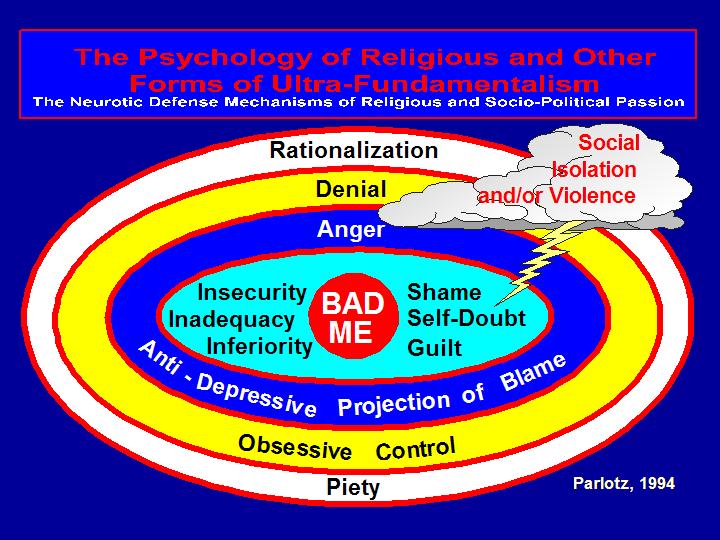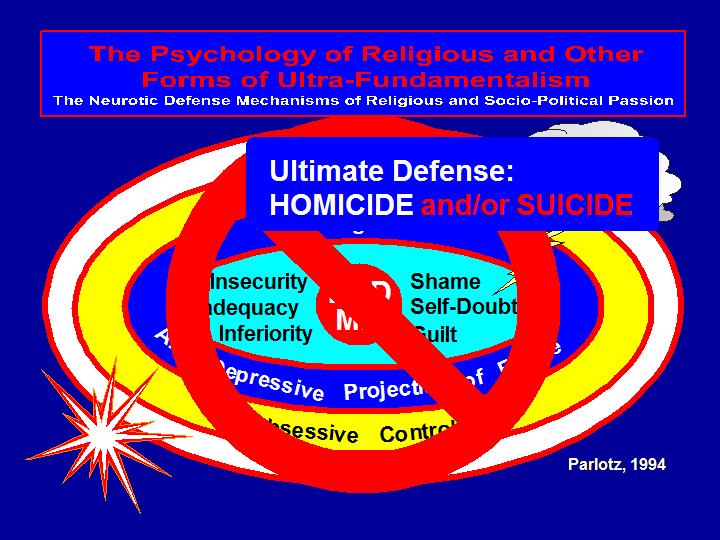|
During human development of the personality, early patterns of adjustment and maladjustment are important to understanding how persons defense themselves against internal and external dynamics and experiences. Ultra-religious fundamentalism exhibits similar personality defenses which appear across cultural and sectarian religious boundaries. These defenses are an early development toward a dominant sense of "bad me" lacking integration with the "good me." The person tends to experience difficulty coping with the primary emotions of insecurity, inadequacy, inferiority, shame, self-doubt, and guilt. As a defense against the psychic pain associated with these primary emotions, the person employs defenses of anger and projection of blame to defend against depression. Hence, the small child blames his or her hand for bad behavior rather than excepting personal responsibility in an integrated manner. Unable to defend against these internal, painful emotions, the person also in faced with defending against external threats. Hence, the anger and projection of blame are employed against others. Denial and obsessive control become the next external layer of defense both against internal and external relationships. Denial takes a great deal of psychic energy to maintain. The obsessive control behaviors, therefore, are employed to assist the denial. Rationalization and piety are employed as the next layer of defense. This defensive system is defended by developing a world view and belief system which fits the fear and anxiety associated with not being able to adequately cope with the primary emotions. However, the piety and rationalizations work best as defenses within an environment which agrees with, supports, and reinforces these defenses as justified and righteous. However, one does not socially exist in situation which is free of conflict; hence, the person is continually confronted with the real world which does not hold the same piety and rationalizations. The defense against this is to change the rest of the world (which is not likely) or to develop another layer of defense, namely, social isolation. This becomes an exaggeration of the in-group/out-group dynamics of any society. Social isolation still may not achieve the emotional pain free state. When the defense of social isolation is threatened, violence against others and/or self may occur. Suicidal and/or homicidal dynamics escallate. Self-mutilation may occur. Suicidal behavioral is an ultimate means of controlling defending against the feared intrusion of external forces which are seen as weakening this defensive system. Violence against these external forces is likewise rationalizated frequently in terms of the social group's piety and developed delusions. When this defense system becomes traumatized by external forces, it is one of the most resilient in being maintained -- in particular, the use of social isolation leading to violence against self and/or others. Examples of this behavior may be seen in the mass deaths of Jonestown in 1978 and of the Branch Davidians outside of Waco, Texas. |
|

